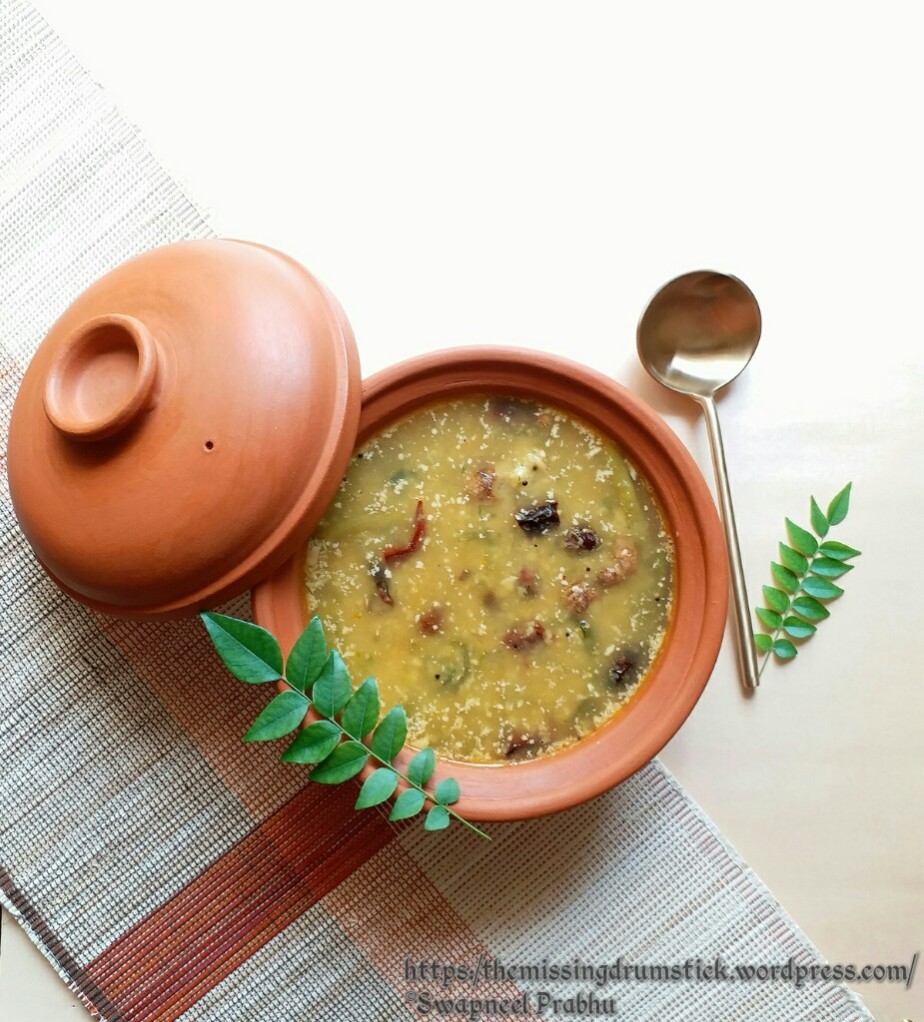Although I was initially reluctant about starting a blog, I was absolutely clear and certain that if I ever did, my first post would be about Dali Thoy (The Saraswat version of Dal).
There probably isn’t any other preparation as fundamental and staple in Indian Cuisine as a Dal. It is prepared and relished in different forms in various regional streams of cooking. The lentil used, the method of cooking, the accompaniment it is served with may vary, but it is omnipresent across sub-cuisines of the land.
Dali Thoy is the quintessential Saraswat Dal epitomising the delicate balance of robustness of flavour and refinement of thought in Saraswat Cuisine. Any Saraswat worth his or her salt would melt, go weak in the knees and break into a sonnet at the mere mention of Dali Thoy and I am no exception. This is one Dal common to both,the Goud Saraswat and the Chitrapur Saraswat schools.It gives me immense joy to introduce you to this gem from my Mother Cuisine.
What’s especially fascinating about this particular recipe is that it has none of the fanfare one typically associates with a decadent Dal. No cumin-garlic Tadka, no slow cooking for hours, no butter or dairy in any form and yet, what you get is a dreamy, creamy Dal.
Although there could be variations and subtle differences, the base recipe remains the same. Which is essentially Tuar/Toor/Arhar Dal (split pigeon peas) cooked with ginger and green chillies, perfectly seasoned and finished with a tempering.
The addition of ginger and green chillies at the pressure cooking stage ensures a constant and consistent hum of the aromats and a not a random, sporadic burst of flavour. Some households may use turmeric. We don’t. The pale yellow colour sets it apart and is the hallmark of Dali Thoy. Freshly grated coconut provides texture and sweetness, and finely chopped coriander leaves lend a fresh herbaceous burst.
The magic of a good Thoy lies as much in the Phanna (tempering) as it does in the lentil base. It has to be coconut oil! This is indispensable and there are no substitutes. A good quality coconut oil is paramount to achieving the distinct fragrance and nuttiness.
The savoury pop of the mustard seeds, the aroma of the curry leaves, the smoky spice of the dried red chillies and just the right amount of Hing (Asafoetida) come together in harmonious unison to create a well-rounded tempering.
Dali Thoy is an integral part of a traditional Saraswat meal. You will find it on every menu, from weddings, festive celebrations, religious ceremonies to a comforting regular, everyday meal.
It is very much at home in a simple, soul-satisfying vegetarian spread and owing to the hugely flavourful base, it can hold its own when paired with a sizzling seafood side (more on this Saraswat passion cum obsession later). Ample testimony to just how versatile it is.
I truly believe that if there ever was a food equivalent of the Nobel Prize, the genius who invented Dali Thoy would surely be deserving of The Culinary Nobel.
I have had many versions over the years but our heirloom recipe that Aammaa makes, remains my favourite.
This is how to make Dali Thoy
Serves: 4-6
Preparation time : 10 minutes.
Cooking Time : 20 minutes.
Ingredients :
Tuar/Toor/Arhar Dal (Split Pigeon Peas) 1 Cup
Ginger 2 inch piece
Green Chillies 3-4
Coconut Oil 2 Tbsps
Mustard Seeds 1 Tsp
Curry Leaves 10-15
Dried Red Chillies 3-4
Asafoetida ¼ Tsp
Freshly grated coconut 2 Tbsps
Finely Chopped Coriander Leaves
Salt for seasoning
Cooking Dali Thoy
1. Wash the Tuar Dal, add the bashed ginger, break in the green chillies and pressure cook with 2 1/2 cups water till the lentils turn soft and mashable.
2. Once cooked, place the pot on the flame, add enough water to adjust the consistency and bring to a boil.
3. Season with salt.
4. Add the freshly grated/scraped coconut and finely chopped coriander, mix and cook briefly.
5. To make the tempering; heat the coconut oil in a tempering pan and add the mustard seeds.
6. Once the mustard seeds crackle, add the curry leaves.
7. Followed by broken dried red chillies.
8. And finally, the asafoetida.
9. Take the Dal off the heat and pour in the tempering.
10. Immediately cover with a lid to avoid loss of flavour and fragrance of the tempering and to ensure it infuses the Thoy.
11. Serve piping hot with steamed white rice and a suitable side of your choice.
Tips and Tricks:
1. The acid test of a well-made Dali Thoy is that when you spoon it over a bed of rice, it shouldn’t filter and separate the lentils from the watery broth. It should be one, thick, homogeneous, creamy mix.
2. Use the best quality coconut oil for the tempering. Would be great if you can get your hands on some cold-pressed, virgin coconut oil.
3. Cooking it in an earthen pot (like I have done here) imparts an endearing aroma and taste. If you take it a level up and cook it on wood fire or embers, please invite me for lunch.
4. A siesta is mandatory after Dali Thoy. Don’t drink and drive (Yes! you WILL drink the Dal)or operate heavy machinery post an indulgent Dali Thoy meal.

